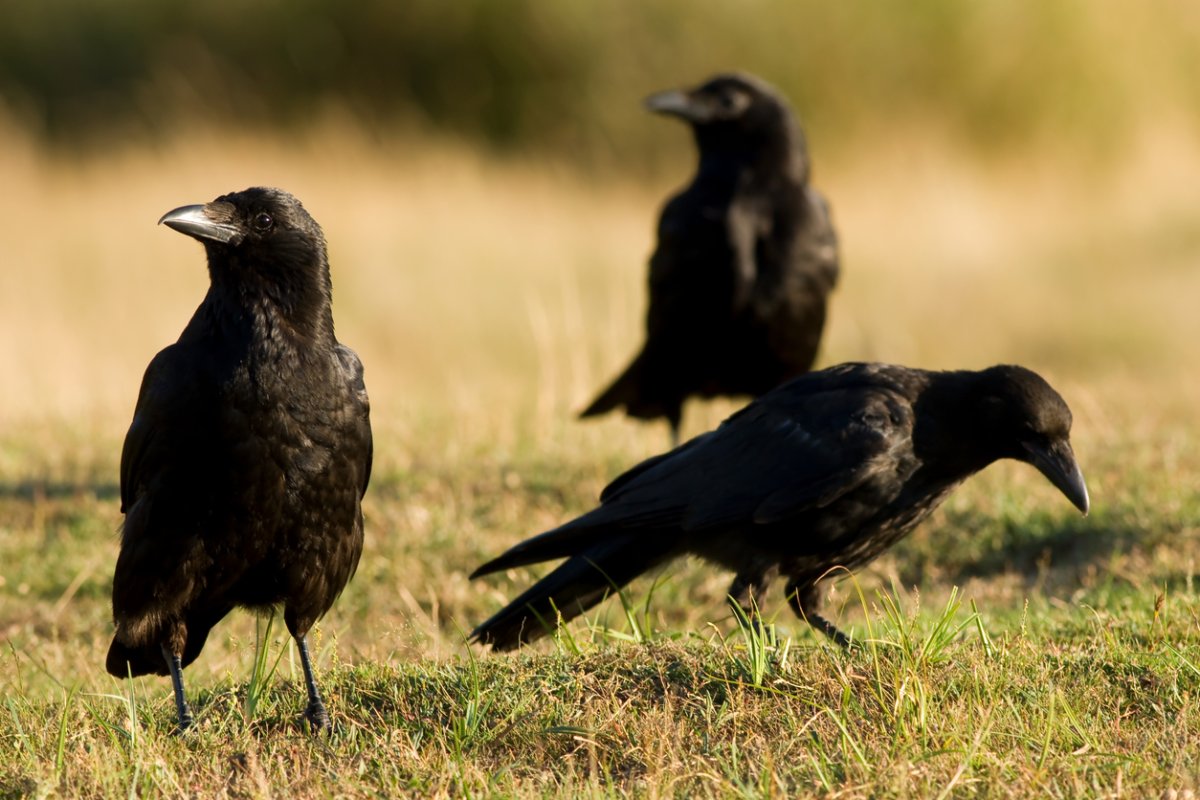

We may earn revenue from the products available on this page and participate in affiliate programs. Learn More ›
Crows are often considered among the most intelligent bird species in the world, due in part to having the largest brain-to-body ratio of all birds. These members of the Corvus genus mate for life, make and use tools, and have even been known to hold grudges. They remember faces and have been known to bring gifts to humans who have been kind to them.
If you find their antics fascinating, you might want to learn how to attract crows to your yard. They aren’t typically attracted to bird feeders, but there are other ways to invite crows to your outdoor space.
Pros and Cons of Bringing Crows Around
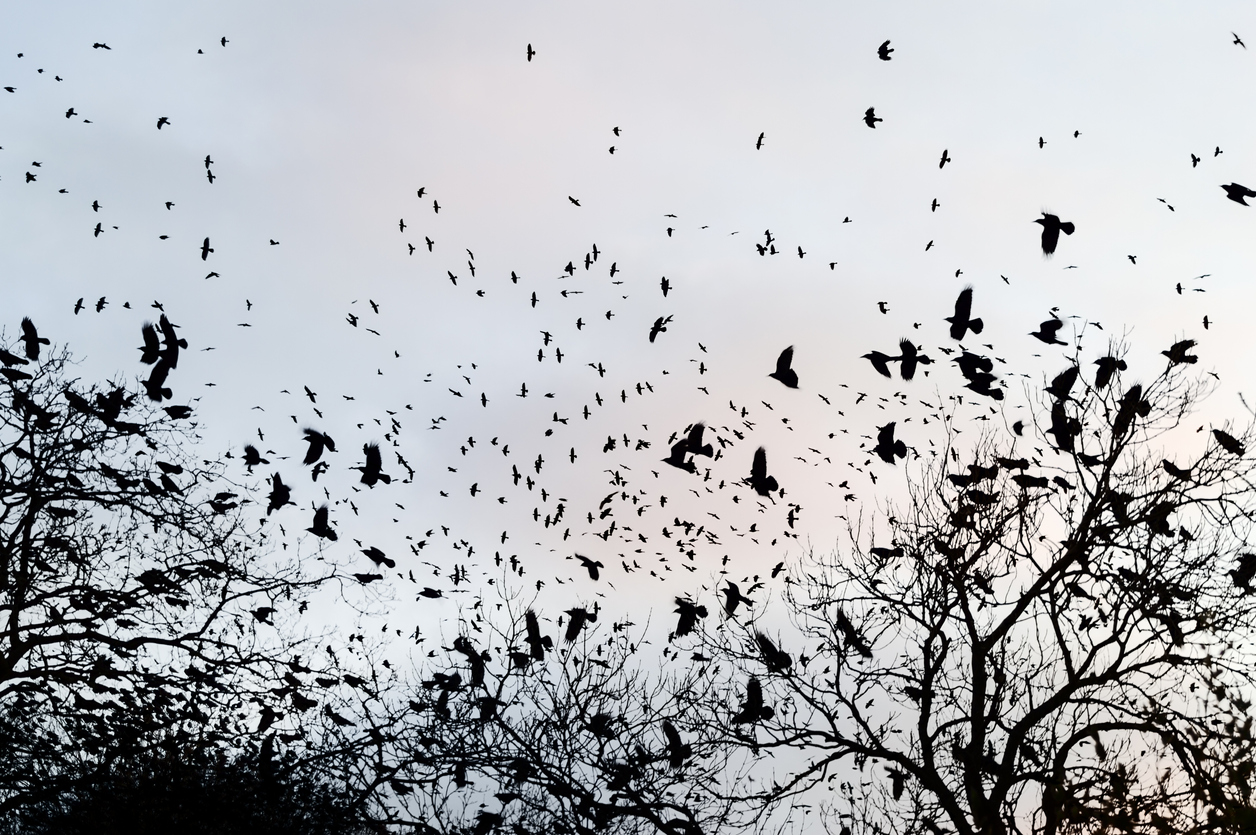
Their reputation as bad omens in pop culture aside, crows are also associated with change and new beginnings. In practical terms, crows are social, intelligent birds that display intriguing behavior, and their presence can provide numerous benefits to private outdoor spaces. Still, not everyone is keen to have a murder of crows (the commonly accepted term for a crow flock) around their home and may even want to keep crows away.
Keep in mind that crows are a protected species in North America under the Migratory Bird Treaty Act, so whether or not you appreciate the benefits of crows in your yard, you cannot (and should not) harm them.
Pros
- Crows are scavengers, so they will consume waste like seeds, garden produce, and carrion left around your yard.
- Crows eat garden pests like snails, small rodents, and a wide variety of insects.
- As territorial birds, crows can keep other predators, such as hawks and eagles, at bay.
Cons
- Large flocks of crows are noisy. Rather than a birdsong, crows are well-known for their loud “caw” call.
- Crows can potentially damage gardens by eating produce and damaging soil structure through pecking.
- Because crows are territorial, they may chase away native songbirds and squirrels. They may even eat other bird species’ eggs.
- Crows may spread trash they encounter as they scavenge, so garbage bins and dumpsters must be kept closed.
RELATED: How to Make Your Windows Bird-Safe: 11 Smart Solutions
1. Forget the feeder.
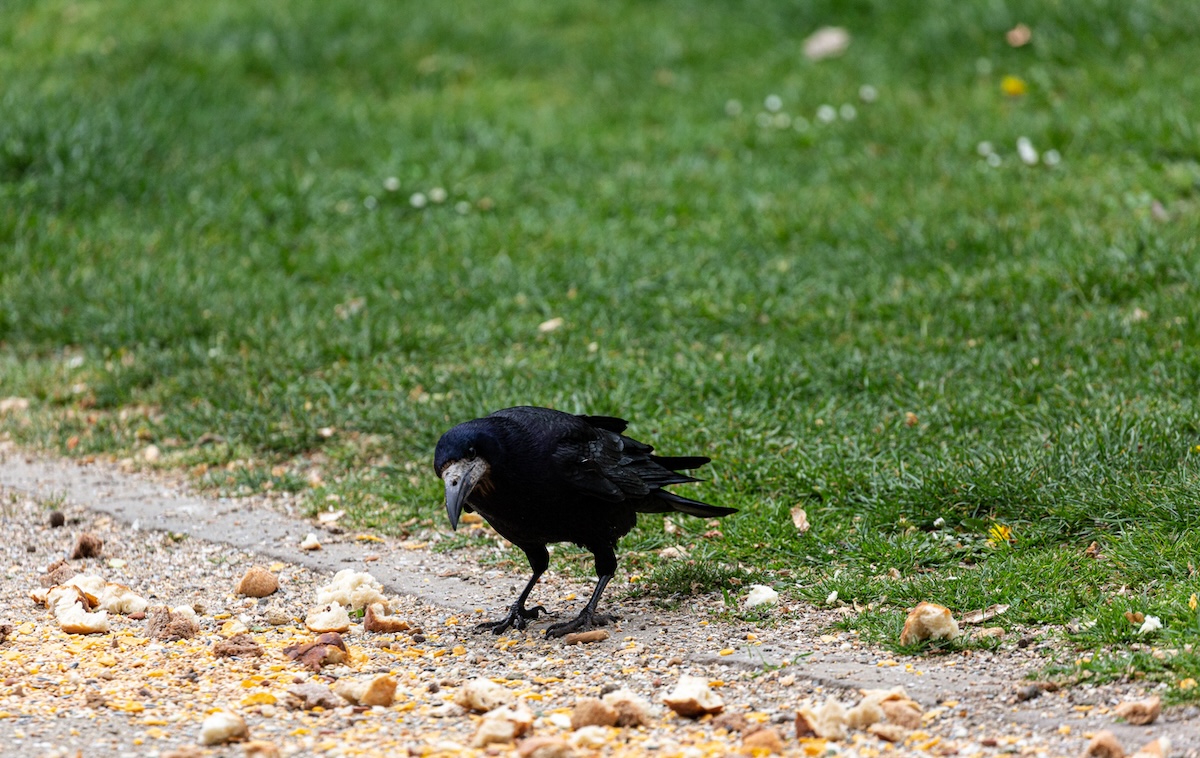
Although other bird species can be lured to a yard with bird feeders, many types of corvids are too big to easily access the average feeder (with the exception of accessible suet). These medium-to-large birds don’t mind feeding from the ground, but if you prefer to avoid the litter spilled from a bird feeder, you can optionally use a platform feeder or a ground feeder.
Those aren’t strictly necessary since you don’t need a special crow feeder to attract crows. According to the Audubon Society, most American crows are happy to eat on the ground in open areas of your yard.
2. Set out crows’ favorite food.
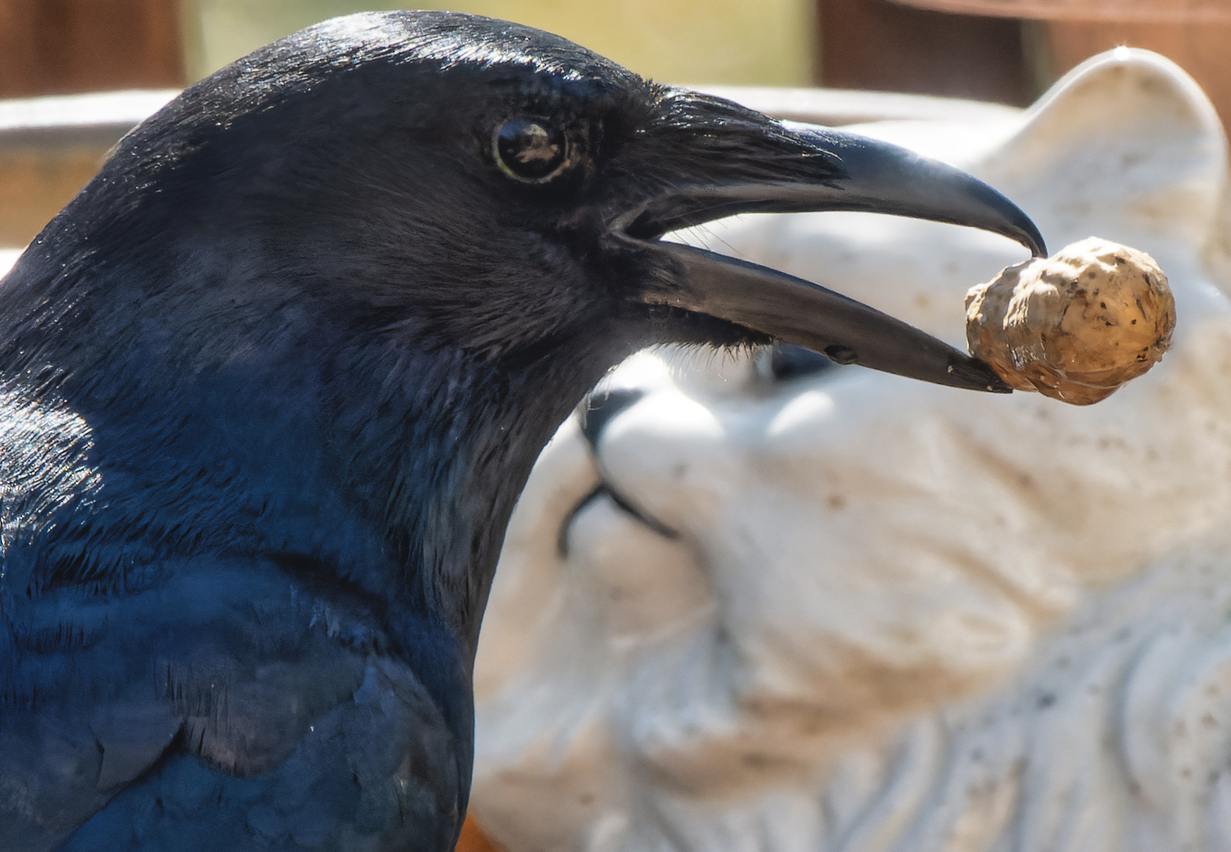
So they like to eat off the lawn, but what do crows like to eat in particular? A crow’s diet can include pretty much anything: insects, worms, snails, frogs, snakes, shellfish, eggs, bird chicks, seeds, grain, suet, berries, corn, fruits (apples, oranges, bananas, grapes, and cherries), and even garbage. You can set out leftovers like cooked or raw pasta, baby cereal, even meat, and something you shouldn’t give most birds: water-soaked bread. Like many of us, crows enjoy a little junk food, such as unsalted popcorn, crackers, and chips. They’ll even eat cat food and dog food.
It seems that crows’ favorite food is nuts—particularly unsalted, whole peanuts in the shell, although they’ll also eat walnuts, almonds, and hazelnuts. Avoid salty foods, dry uncooked beans, avocados, chocolate, onions, and pitted fruits.
3. Provide water for thirsty and bathing crows.
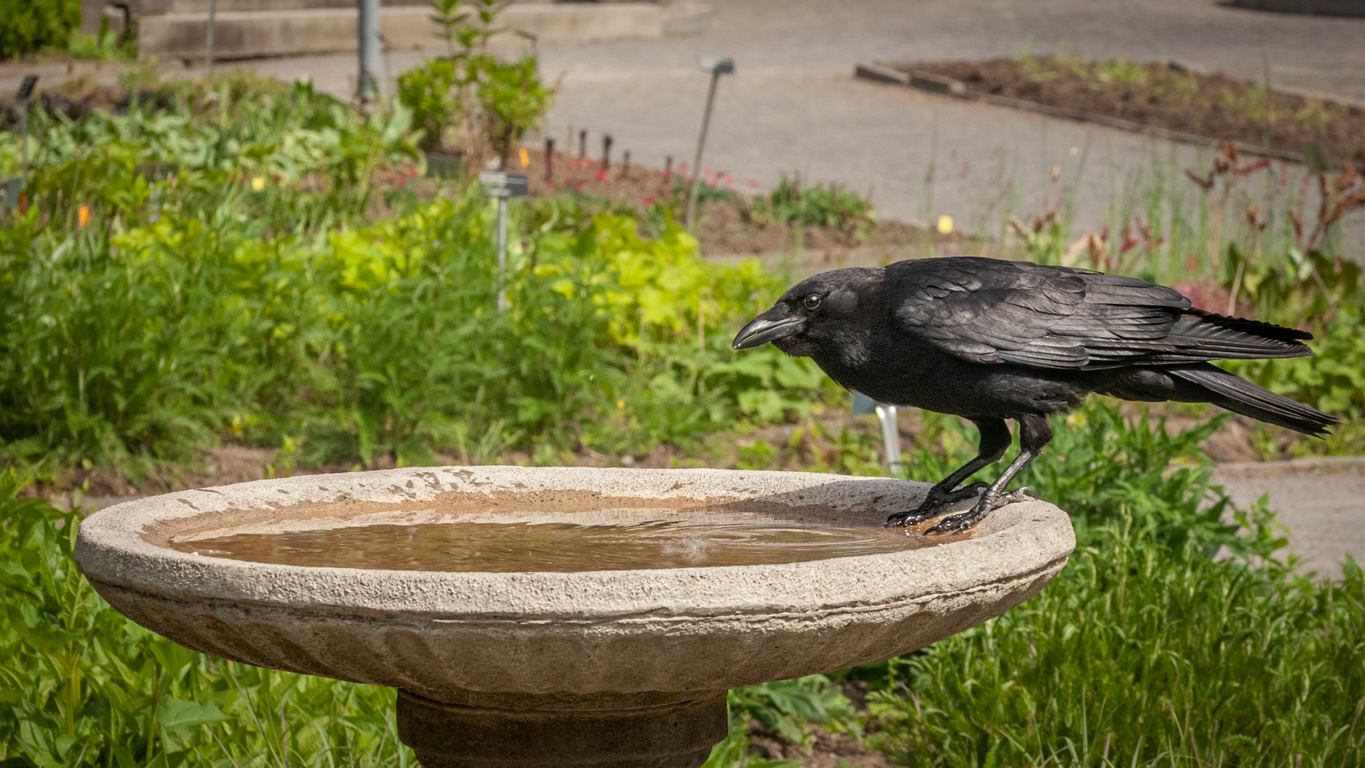
A more alluring attraction than a bird feeder for crows is a crow bird bath. In addition to drinking the water (and using it to soften crusty bread or other hard food), crows use baths to cool off and preen their feathers. These black birds need cooling off in the summer and a reliable source for drinking in winter. Because they’re bigger than most songbirds, crows are more likely to use a wider, deeper bath than other backyard birds. Remember to clean it to prevent bacteria growth and other unhealthy conditions.
4. Give crows a place to roost.
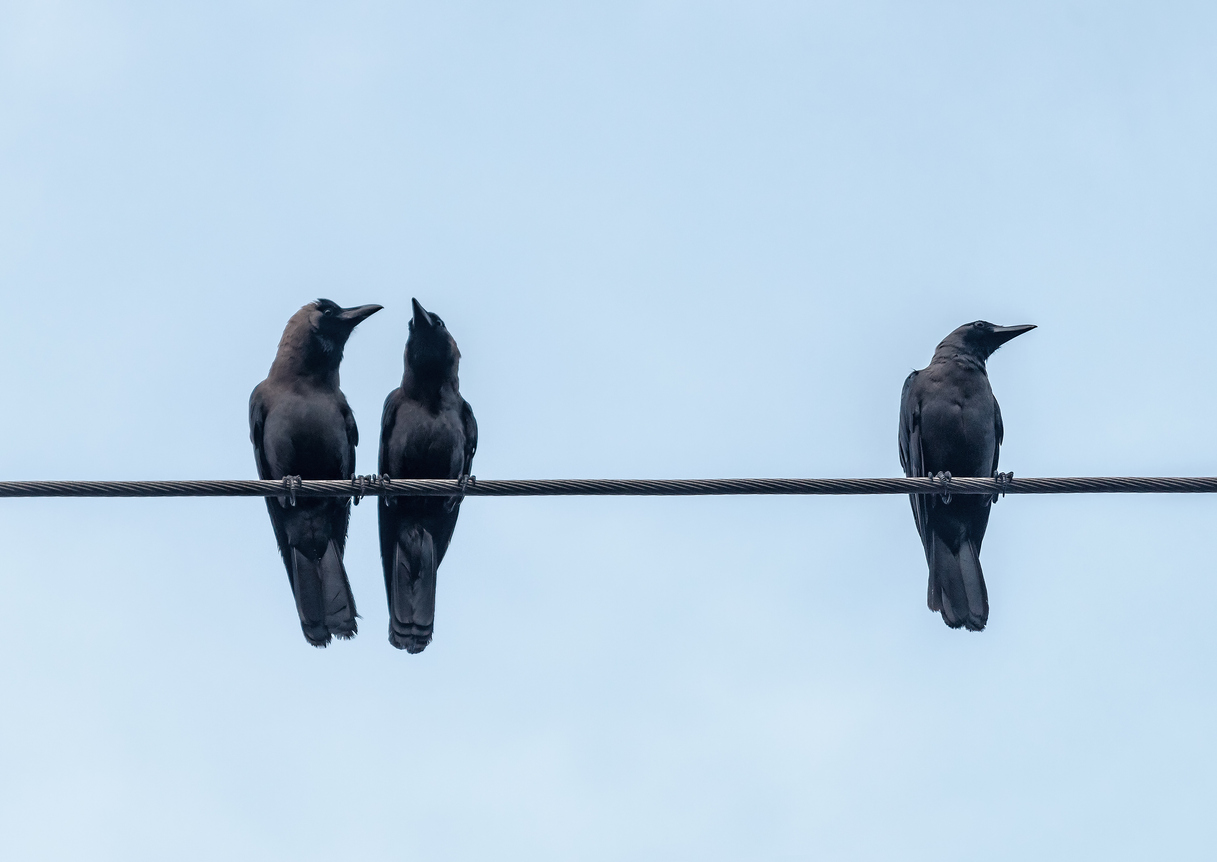
Crows require a safe roosting spot where they can rest and socialize. They prefer horizontal roosts such as building edges, fences, tree limbs, and utility wires. If your yard lacks these, you can create a secure roost by attaching wooden shelves to a fence or adding a clothesline or playground equipment. Just be sure any crow roost you build or purchase is sturdy enough to hold several crows since they like to gather.
RELATED: 10 Things Every Backyard Bird-Watcher Needs for Their Yard, According to a Seasoned Bird-Watcher
5. Feed at regular times of the day.
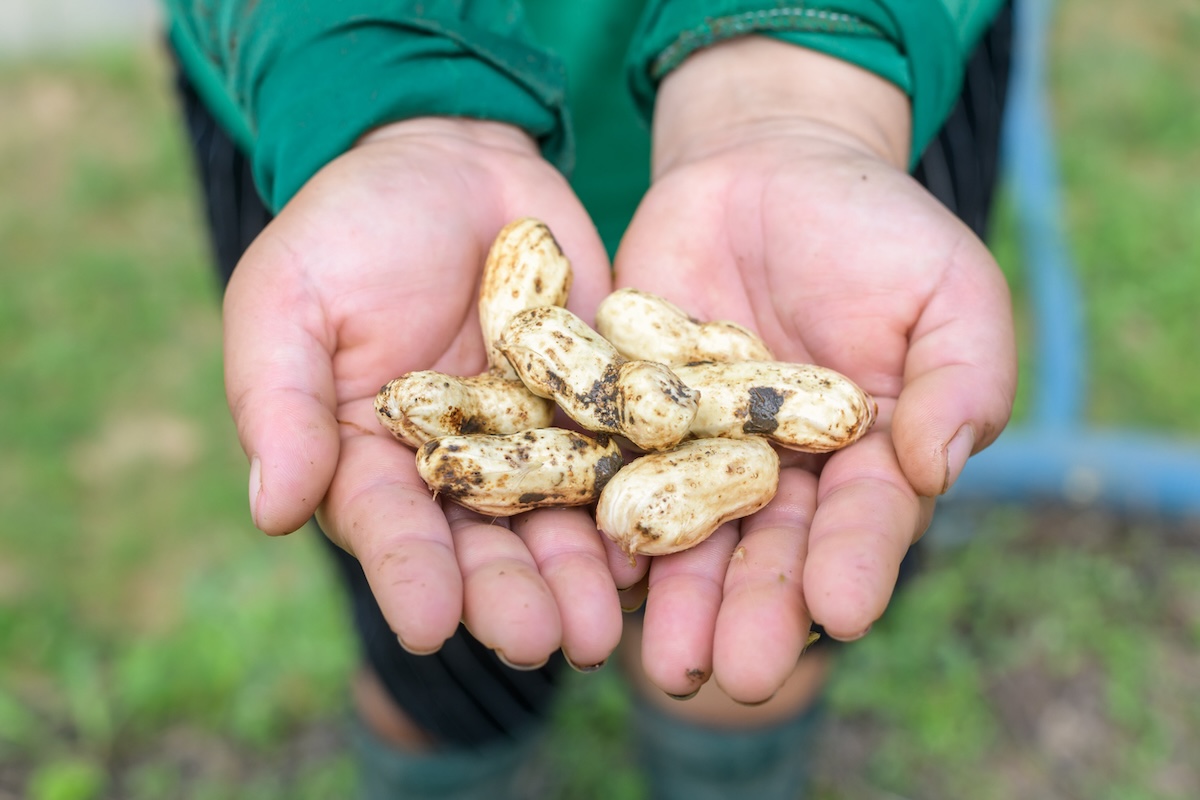
These intelligent birds will quickly learn your feeding schedule. After just a couple of visits, crows can memorize feeding routines. Putting food out at the same time every day creates a reliable pattern that will attract them at mealtime. The best times to choose are early morning and late evening, and it’s suggested to put out only as much food in a crow feeding station as they will eat in one sitting; this encourages them to come back for the next meal.
6. Keep noise levels down.
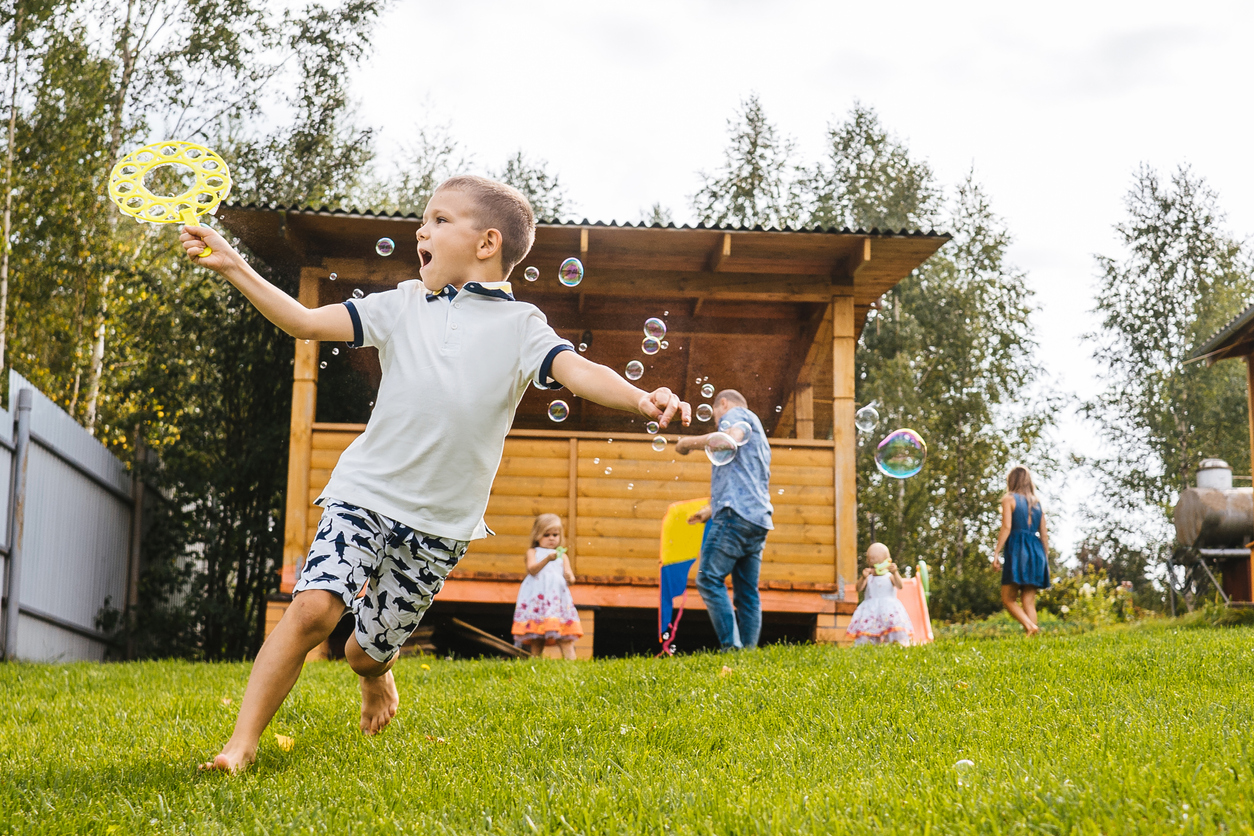
Although crows are known as loud birds, they don’t like to visit noisy spaces. Loud, sudden, random—and, especially, unnatural—noises can spook them. Crows generally avoid areas where children are playing, wind chimes or bells are hung, or TVs and radios are blaring. Even squeaky gates can scare them away, so if you want them to stop by at feeding time, try to keep it calm and quiet.
7. Bring them in with crow calls.

One noise that will attract these large black birds is the sound of crows—as long as it’s the right kind of sound. They are often intrigued by a friendly crow call. Crows use distinctive calls for different purposes: distress, alarm, rally, and attention. Be sure to communicate the right type of call to attract these inquisitive birds.
A variety of devices to re-create crow calls are available. A reed caller that is similar to a duck whistle is effective, but you can also invest in an electronic device that emits crow sounds. If you know how to call crows, though, there’s no need to buy a device.
8. Create a safe environment.
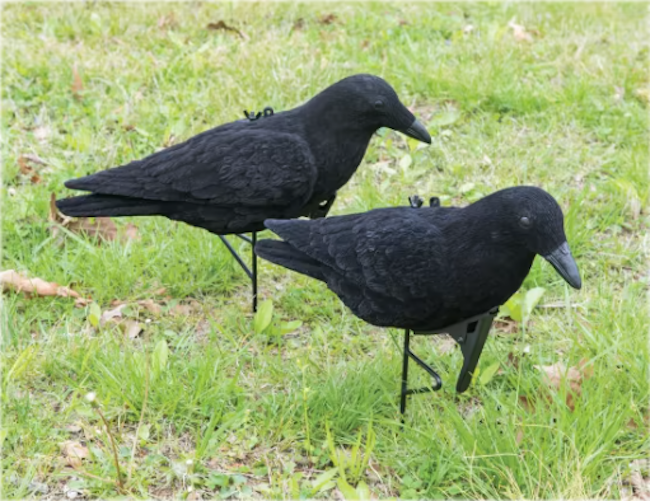
Before you invite crows to your yard, it’s important to ensure their safety during their visit. This can be accomplished by removing things that frighten crows, such as pets and predators (including owl decoys and scarecrows), noise, and large objects such as ladders.
To impress upon crows that your yard is a safe space, fake it ‘til you make it by adding crow decoys. Properly placed fake crows in a small grouping on a tree branch or bird bath might convince the real thing to investigate. It’s even better if at least one of the decoys moves.
RELATED: Curious About What Bird Species Are in Your Backyard? This App Has the Answers
9. Offer nesting materials.
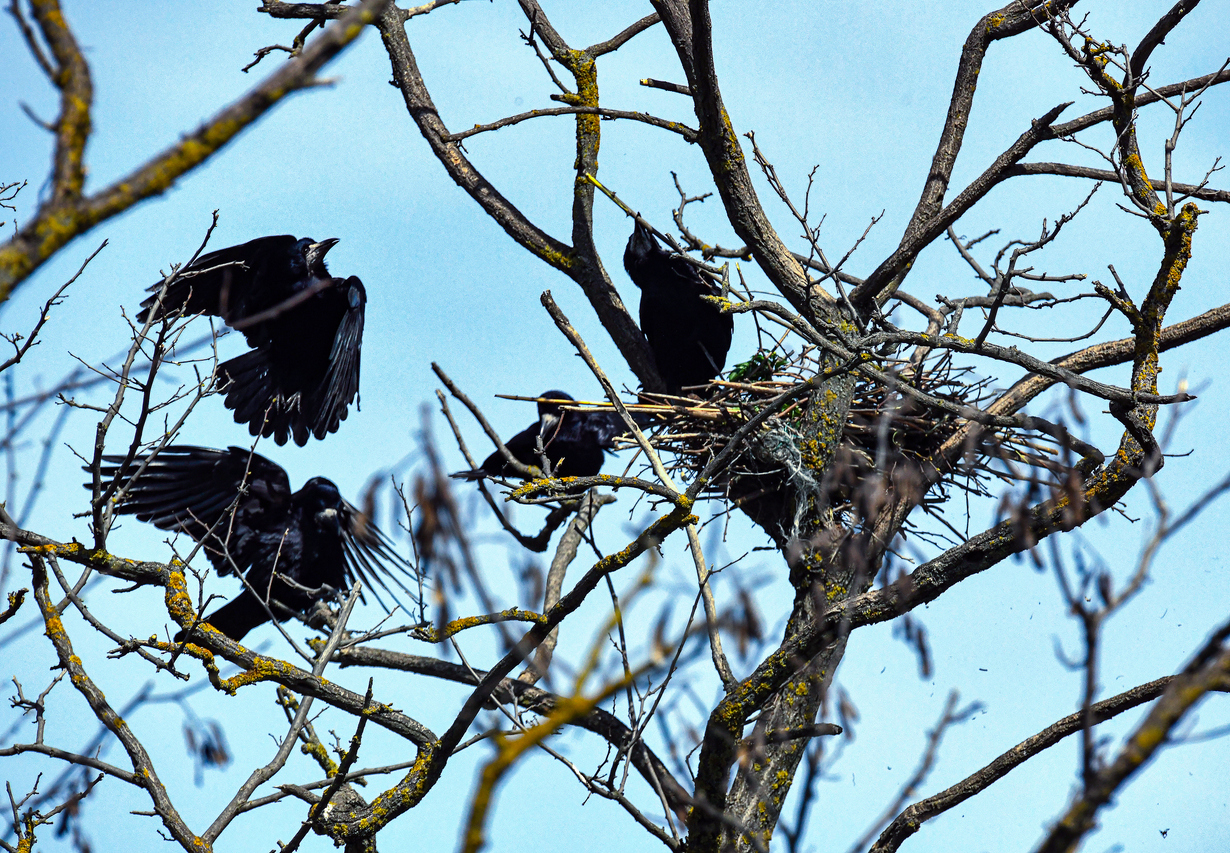
Crows often like to nest near where they eat, and will look for nesting materials in the vicinity of where they build their nests. Corvids like to nest in trees 10 to 70 feet above the ground, where they weave twigs, pine needles, bark strips, sticks, animal fur, weeds, grass, and other plant fibers. Offering these materials will encourage them to frequent your yard, especially if they can grab a bite to eat while they’re there.
10. Ensure they can gather in open spaces.
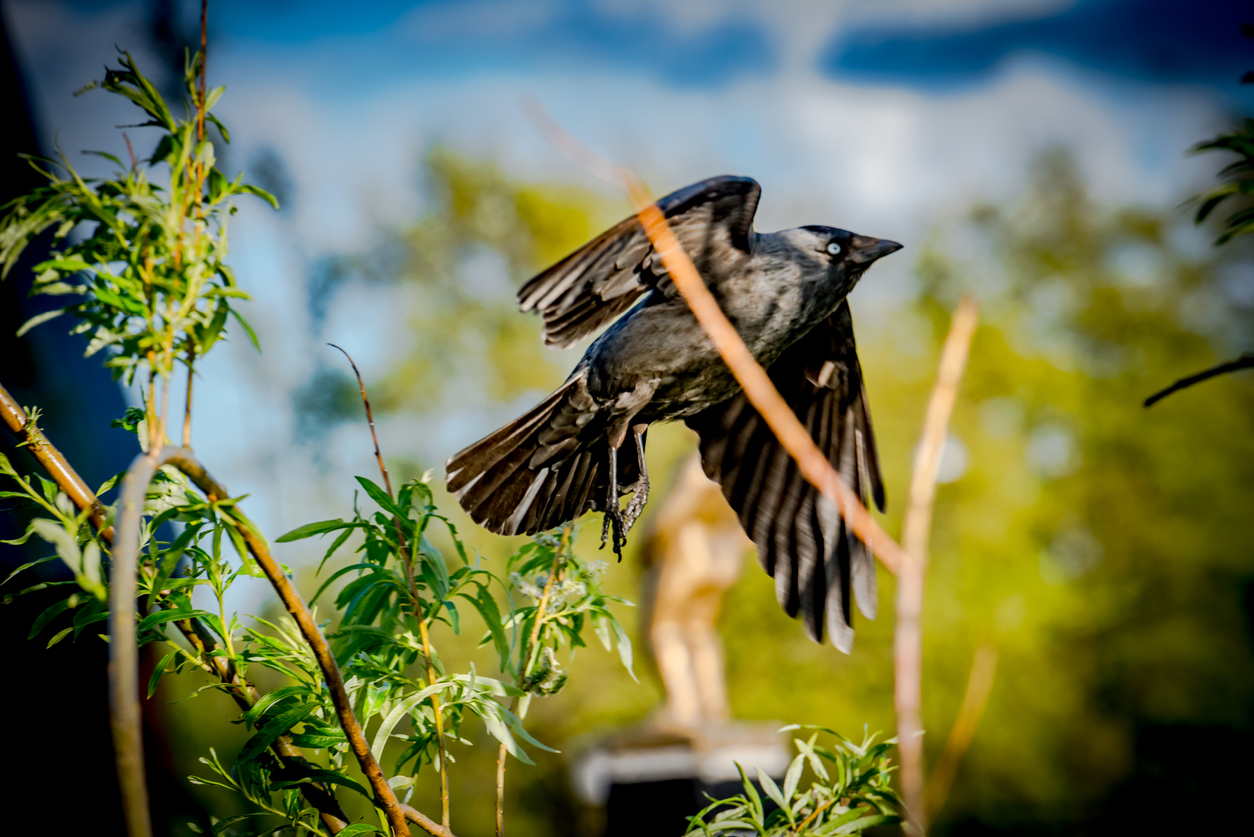
Providing a welcoming space of an appropriate size with the right amenities will attract crows. Because of their size, crows like large spaces, and can feel threatened or uncomfortable in small spaces. That said, they prefer an area surrounded by trees and shrubs that they can use for shelter, safe hiding, breeding, and nesting. Feeding stations placed in open areas near cover are more appealing because they provide escape from predators.
11. Attract crows with shiny objects.

While it might be a myth, some people firmly believe that crows are drawn to shiny objects and that placing shiny objects around your yard will catch their attention. There is no empirical evidence to support this, but because corvids have been known to bring gifts to people they like, some experts suspect that the birds are attracted to items of value to the humans they admire. Young corvids are especially inquisitive and like to handle objects.
It won’t hurt to place a few shiny trinkets—CDs or DVDs, coins, beads, or anything too large for them to swallow—in a spot where they can reflect sunlight.
